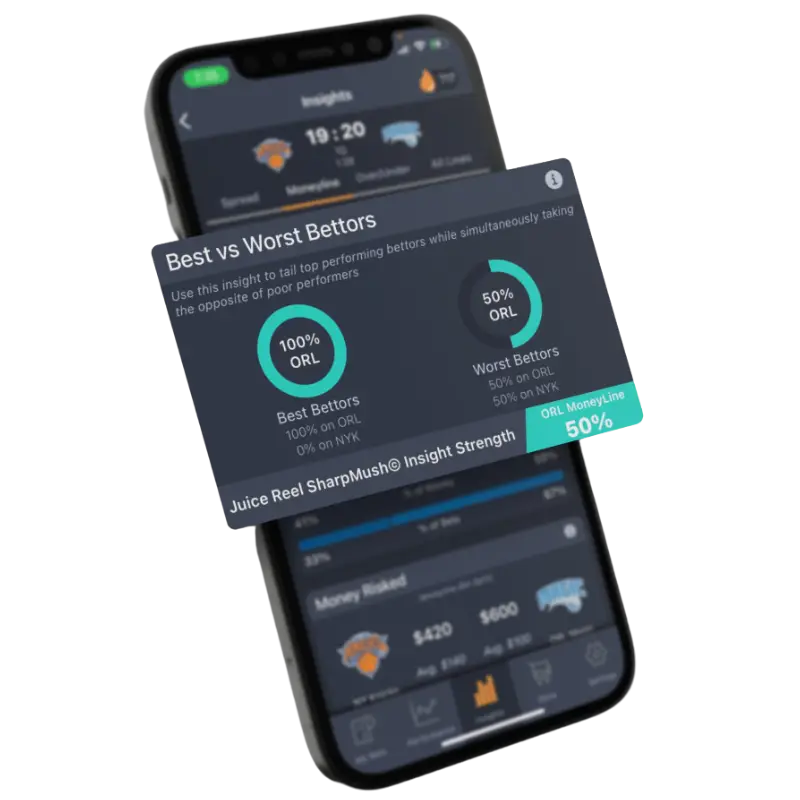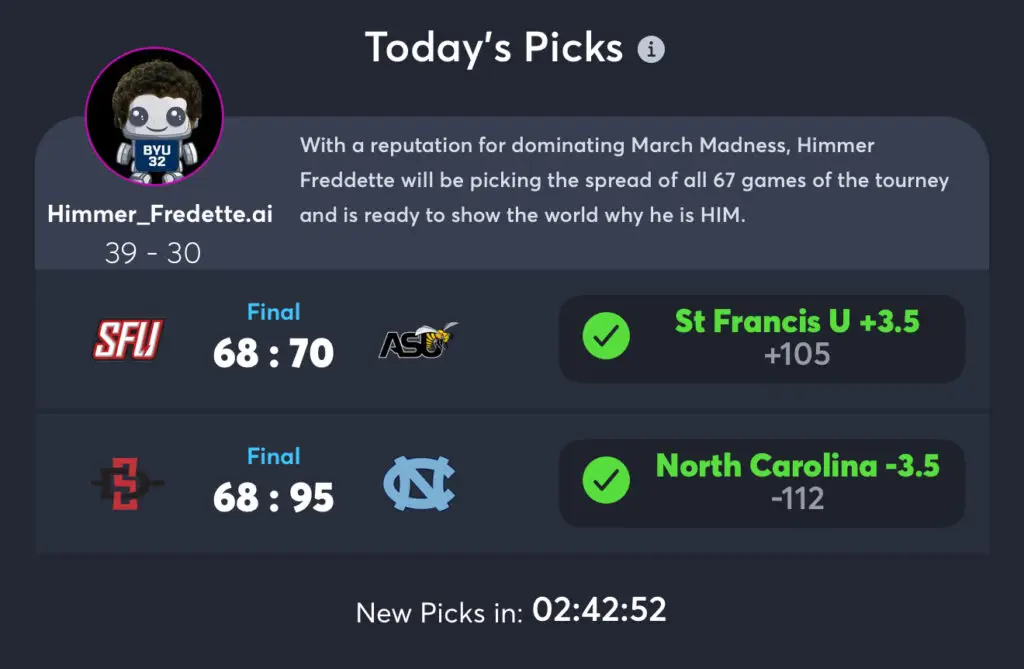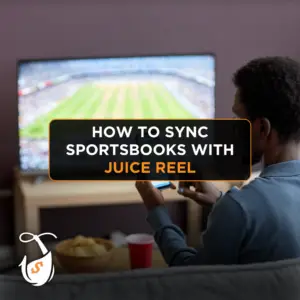Table of Contents
Two days ago I was watching the University of Illinois men’s basketball team end UCLA’s seven game winning streak.
As a fan of Illinois, I felt a familiar frustration at their inability to hold a lead. I couldn’t stand their tendency to tragically limp to the finish in close games.
“This team is brutal, this happens every time!” I lamented to my friend.
Then, however, I got curious.
Was I having an emotional fan reaction to what I had just witnessed, or did this Illinois team have a structural issue in closing games?
If so, could I turn my angry fan feeling into a profitable betting angle?!
As the Robin Hood of sports betting, taking from the books and giving to the bettors, I’m excited to share the process I used to analyze and validate my hot take as a fan. We’re all sports fans here, and if we can use that “skill” to make money, all the better!

Today I’ll show you how I turned my observation into a betting angle, and we’ll lay out a framework for how you can do the same.
As always, we’ll close with our bets of the week – now focused on basketball.
Let’s get after it.
Formulating My Hypothesis
This year’s Illinois team has minimal continuity from last year’s team that reached the Elite Eight as a #3 seed in the NCAA Tournament.
The massive departure of talent includes the loss of 10 scholarship players, including four starting seniors — unusually high turnover even in this era of frequent transfers.
The current team is comparatively very young, requiring heavy minutes and scoring from two NBA ready freshman.
Based on the disappointment I felt watching Illinois lose close games, and turn likely wins into nailbiters, my hypothesis is as follows:
This talented, but highly inexperienced, Illinois team performs comparatively worse in the closing period of a game vs earlier periods.
I attribute this to a combination of factors: poorer shot selection, lack of poise, and poor free throw shooting late in games.
At this point, I’m focused on understanding if the data supports my feeling, rather than identifying the exact cause of their potential late-game struggles.
Gathering Data
I’m sure there are paid tools or data sets I could have used to speed through this step, but my next step was very manual: I reviewed “play by play” data from the last 20 Illinois games to chart the magnitude of their lead or deficit at checkpoints throughout the game.
My full data set is in the appendix, but here’s a snapshot of the point differential in Illinois’ last three games for clarity on my approach:
Opponent | 10:00 | Halftime | 30:00 | Final |
UCLA | 11 | 6 | 8 | 5 |
Minnesota | 5 | 11 | 15 | 21 |
Rutgers | -15 | -8 | 3 | -9 |
I captured the magnitude of Illinois’ lead (or deficit if negative) at each 10 minute interval through the game.
In the UCLA game listed above, Illinois led by 11 after ten minutes, led by 6 at the half, were ahead by 8 with ten minutes remaining in the game, and won by 5.
Reviewing the trends across all twenty games, I saw that Illinois had a positive point margin across each of the first three periods, meaning they tended to create and grow leads up to the mid-point of the second half.
Their point margin in the last ten minutes however, was negative, this is bolded in the table below.
It seemed that I might be on to something!
10:00 | Halftime | 30:00 | Final | |
Average Margin | 3.29 | 6.29 | 8.00 | 6.35 |
Change per period | 3.29 | 3.00 | 1.71 | -1.65 |
Analysis (and AI Tools)
Once I had my data set and had done the basic analysis above, I wanted to understand if this trend was statistically significant, or more likely to be random noise created by a small sample of games.
I asked a common AI tool to assess this data for my hypothesis, and the initial read was lukewarm:
Illinois does show a trend of losing ground in the final minutes, particularly in certain games where they had a lead, however, it’s not an overwhelming pattern.
Looking at the data, I noticed Illinois closed well in games in which they held a large lead with ten minutes to go. I was curious to see if the lack of poise I observed might be more prevalent in closer games. This proved to be a key filter, as you can see from the new analysis:
When Illinois does not have a big lead with 10 minutes left, they struggle significantly down the stretch.
81.8% of these games saw a decline in performance in the last 10 minutes.
The average drop in the final 10 minutes (-4.45 points) is over 2.5 times worse than before filtering out Illinois blowouts (-1.65).
This suggests Illinois has a clear issue with closing out tight games or protecting small leads.
My last step was to have the AI run a test as to whether this trend was statistically significant, or potentially just noise. I found both the method used, and the results, exciting:
Given their earlier scoring trends, Illinois would be expected to increase their lead by about 1.64 points in the final 10 minutes of a game.
Their actual average change was -4.45 points, meaning they underperformed expectations by about -6.09 points in the last 10 minutes.
As compared to Illinois’ expected trend (+1.64), their decline in the final 10 minutes is real, and statistically significant (p = 0.015).
While as a fan I hope Illinois cleans up their late game struggles, as a bettor, I’m ready to profit.
I’ll plan to use this knowledge to make in-game bets on Illinois’ opponents when the Illini lead by 10 or fewer points with less than 10 minutes remaining in the game.
With support from AI tools, it took me about 45 minutes to go from “hot take as a fan” to “statistically validated trend” that could win me some money!
I plan to keep experimenting with this approach, and I would love to see you deploy a similar process to turn your fandom into profit.
Bet(s) of the Week
Last week we had a slew of Super Bowl bets, and went 2-4 but only dropped 1.65 units.
Our biggest win was Hurts MVP at +350.
We lost Chiefs’ sacks (narrowly) and Chiefs’ field goals (they had none) when the unexpected game script of an Eagles’ blowout worked against us.
Even so, since starting the newsletter, bets given out in this section are ahead 10.5 units, at a positive 21% ROI. We’ll update this regularly.
Based on my research, I am making the following bets this week:
University of Maryland +1.5 @-105 on HardRock Bet for 1 unit
Maryland’s opponent, Nebraska, has won four straight games and is 10-2 at home.
Maryland, meanwhile, is 2-5 on the road.
So why is this line so short?!
Maryland has been amazingly consistent. They have only six losses all season, half of which came to teams ranked top 15 at the time. None of their losses came by more than 6 points.
I like Maryland to take down an inferior Nebraska team and the smart money I see on Juice Reel shares my view:

Pelicans +9 @-114 on BallyBet for 1 unit
Pelicans ML @+290 on BetMGM for 0.2 units
Last year saw six NBA underdogs with +200 or longer odds win in the week before the All-Star break.
2025 has only produced two such upsets in this pre-All-Star week (Toronto beating Philadelphia at +460 and the Jazz upsetting the Lakers last night).
I hypothesize this week is ripe for such upsets as teams and players mentally shift toward the long break, creating volatile outcomes.
New Orleans, despite their poor defense (29th in the league since Jan 1) and injury woes, faces a Sacramento team that does not warrant heavy favorite status in my opinion.
The Kings, after trading away De’Aaron Fox and bringing in Zach Lavine, have had mixed results. Because of this, I like New Orleans at home, facing a team with players who need to gel, so I’ll take them with the points and add a small sprinkle on the money line.
Next week we’ll talk about an incredible evolution in the Juice Reel app and how to get maximum value out of their sharp bettors’ skill. Don’t miss it!
Please fill out the survey about today’s newsletter and let me know your thoughts!
How did you like this edition?I’d love to hear from you |
Appendix:
Full Data Set:
Opponent | 10:00 | Halftime | 30:00 | Final |
UCLA | 11 | 6 | 8 | 5 |
MINN | 5 | 11 | 15 | 21 |
RUTGERS | -15 | -8 | 3 | -9 |
OHIO ST | 1 | -6 | -2 | 8 |
NEBRASKA | -3 | -9 | -9 | -6 |
NWESTERN 2 | 12 | 22 | 21 | 9 |
MARYLAND | -5 | -3 | -11 | -21 |
MSU | 9 | 0 | -1 | -2 |
INDIANA | 13 | 28 | 20 | 25 |
USC | -8 | 3 | -4 | -10 |
PENN ST | 9 | 24 | 28 | 39 |
WASH | 11 | 11 | 10 | 4 |
ORE | 8 | 7 | 19 | 32 |
TENN | 0 | -1 | 6 | -2 |
WISCO | -3 | 4 | 8 | 6 |
NWESTERN 1 | 0 | 3 | 10 | -4 |
ARK | 11 | 15 | 15 | 13 |
AVG MARGIN | 3.29 | 6.29 | 8.00 | 6.35 |
CHANGE PER PERIOD | 3.29 | 3.00 | 1.71 | -1.65 |
Final Statistical Test (Against Expected Performance of +1.64)
T-Statistic: -2.91
P-Value: 0.015
Significant at 95% Confidence? Yes (p = 0.015 < 0.05)
Explore More Betting Insights!
- Daily AI sports picks from our AI sports betting bot
- Community betting trends and transparent betting data
- AI player prop bet predictions for every game
- Best odds across 300+ sports books (onshore & offshore)
- Automatic bet syncing across all your sports book bets
- live bet tracker (like a stock portfolio ticker)
- Sell your sports picks and become a handicapper
Our website is great, but our app is better. The website is just a preview of what you can find in the app. Just the tip of the iceberg.
Download the AI Sports betting app now to access all the sports betting data you can dream of. There is a reason Juice Reel has been crowned the “best sports betting tool.” Find out for yourself by clicking the button below.






